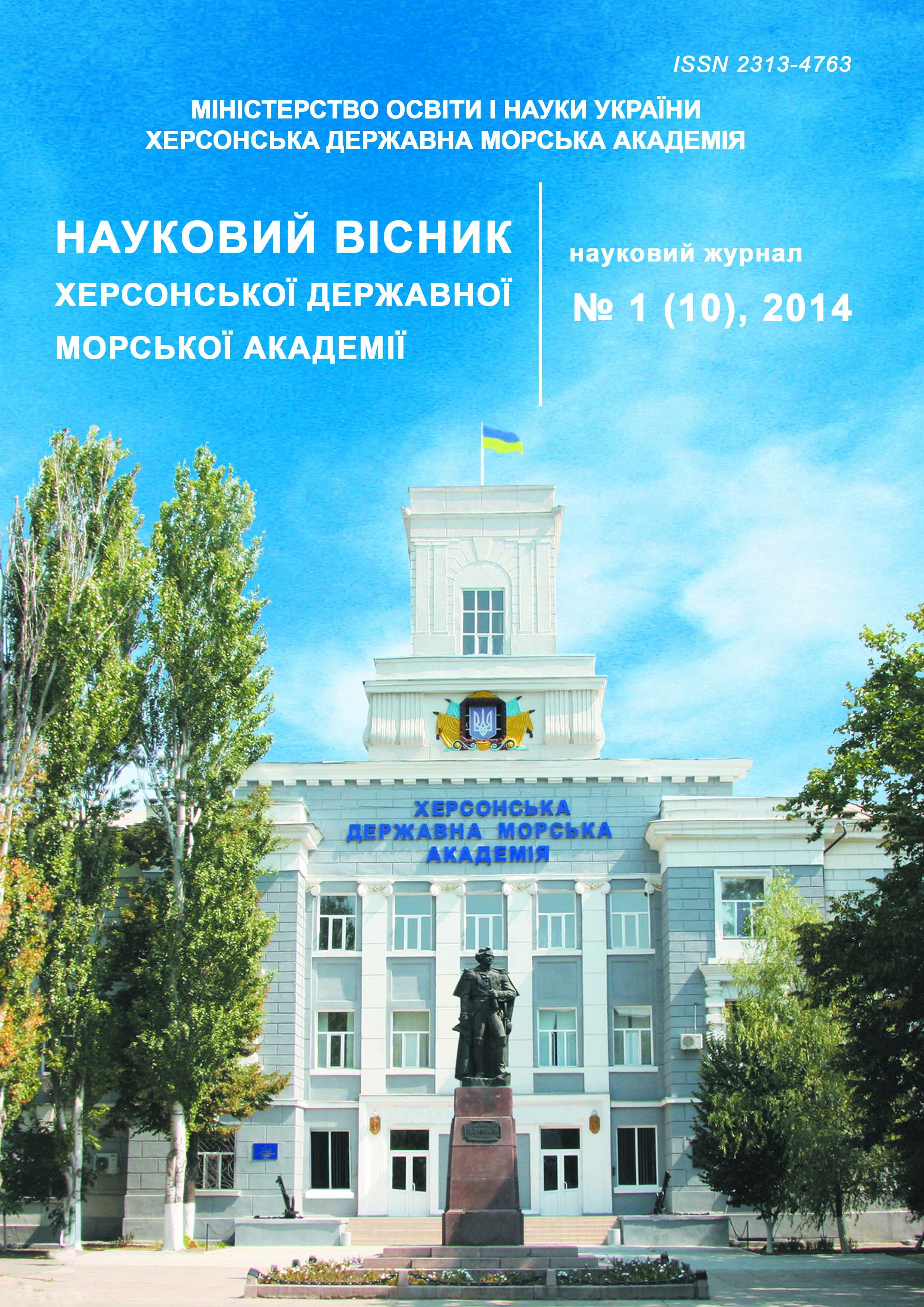ANALYTICAL METHOD OF DESCRIPTION OF INTERFACE FOR AUTOMATED OPERATOR WORKPLACE OF POWER SYSTEM
Abstract
The principles of the mathematical description of elements of the operator’s user interface of ship power plants to determine the component interfaces and the structural composition of workstations in the design of human-machine systems, and perform analysis of the processes of transformation of information in the interaction of the operator workstation with all the subsystems of the automated control system have been described. Proposed a method for formalization of the work process of operator with onscreen controls. The structural-functional model of the system to measure and monitor the parameters of the synchronous generator have been developed. The rules for describing functional structures at various levels of decomposition of the monitoring and control of ship’s power plant have been defined. The presence of an analytical model of the user interface is a measure of completeness and consistency, to determine the types of relationships and connections between subsystems control and visualization, as well as to describe the functionality of the individual subsystems and data processing algorithms. Advantage of this approach is in the use of different levels of decomposition to describe subsystems and elements of ICS, which allows to highlight the most important aspects of the description of the various stages of design and analysis system. The approach has an object-oriented style description contains information about the structure and types of communication links between the constituent elements of the system. Represented obviously user interface elements, elements of information transformation remain transparent to the developer and contain information about the behavior of the elements, requirements and their interaction capability.
References
Сергеев С. Ф. Введение в проектирование интеллектуальных интерфейсов. Учебное пособие / С. Ф. Сергеев, П. И. Падерно, Н. А. Назаренко. – СПб. : СПбГУ ИТМО, 2011. – 108 с.
Обознов А. А. Проектирование пользовательского интерфейса : эргономический подход / А. А. Обознов, А. С. Баканов. – М. : Изд-во «Институт психологии РАН», 2009. – 184 с.
Радванська Л. М. Моделі, методи та засоби підвищення ефективності інтерфейсу «користувач–ЕОМ» у системах організаційного управління : автореф. дисс. канд. техн. наук / Л. М. Радванська. – Херсон : ХГТУ, 1999. – 17 с.
Рябенький В. М. Моделирование микропроцессорных систем управления газодизель-генераторными установками / В. М. Рябенький, А. О. Ушкаренко, В. И. Воскобоенко // Вісник Національного університету «Львівська політехніка». – Львів : НУ «Львівська політехніка». – 2009. – № 637. – С. 78-82.
Рябенький В. М. Метод синтезу математичних моделей логіко-динамічних процесів контролю та керування / В. М. Рябенький, А. О. Ушкаренко // Технічна електродинаміка : тем. випуск, Ч. 2. – Київ, 2011. – С.121-125.
Ходаков В. Е. Адаптивный пользовательский интерфейс : проблемы построения / В. Е. Ходаков, Д. В. Ходаков // Информационно-измерительные системы. – 2003. – № 11 (11). – С. 12-19.
Соколова Н. А. Адаптивный интерфейс АРМ диспетчера системы электросетей / Н. А. Соколова, Д. В. Ходаков // Автоматика. Автоматизация. Электрические комплексы и системы. – 2000. – № 2 (7). – С. 48-56.
Большой психологический словарь / Сост. и общ. ред. Б. .Г. Мещеряков, В. П. Зинченко. – СПб. : Прайм-ЕВРОЗНАК, 2003. – 672 с.
Глушков В. М. Кибернетика, вычислительная техника, информатика. Избранные тр. в трех томах. Т. 1. Математические вопросы кибернетики. Т. 2. ЭВМ – техническая база кибернетики. Т. 3. Кибернетика и ее применение в народном хозяйстве / В. М. Глушков. – К. : Наукова думка, 1990.






